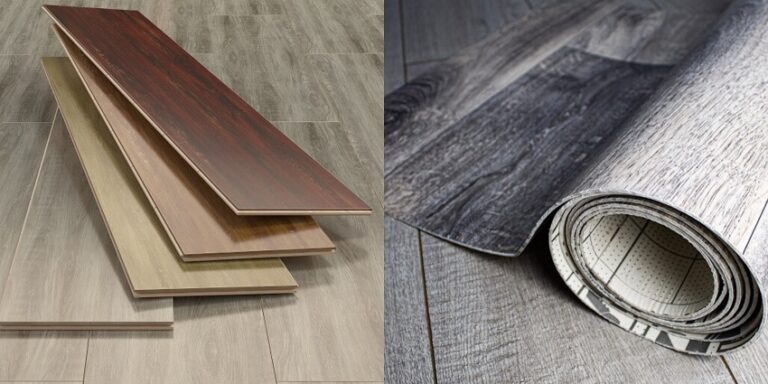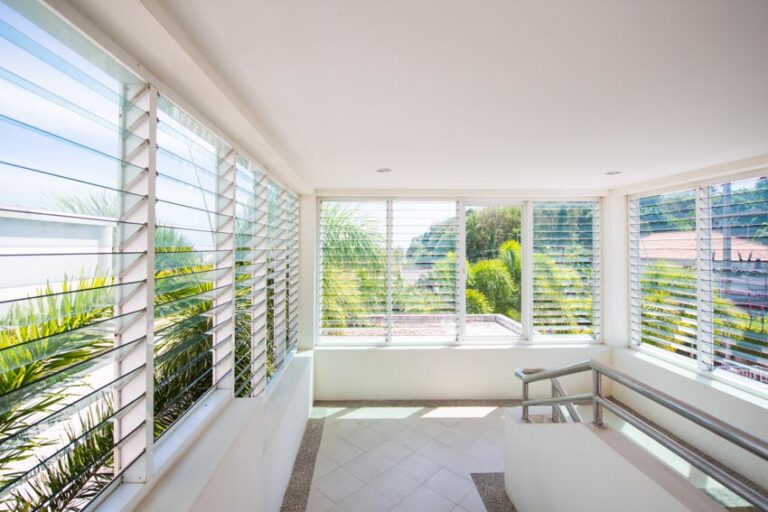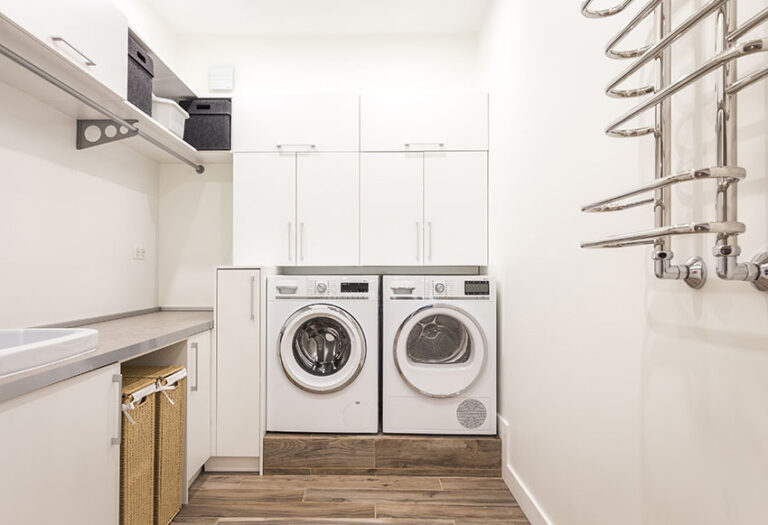9 High LRV Stucco Paint Colors To Transform Your Exterior
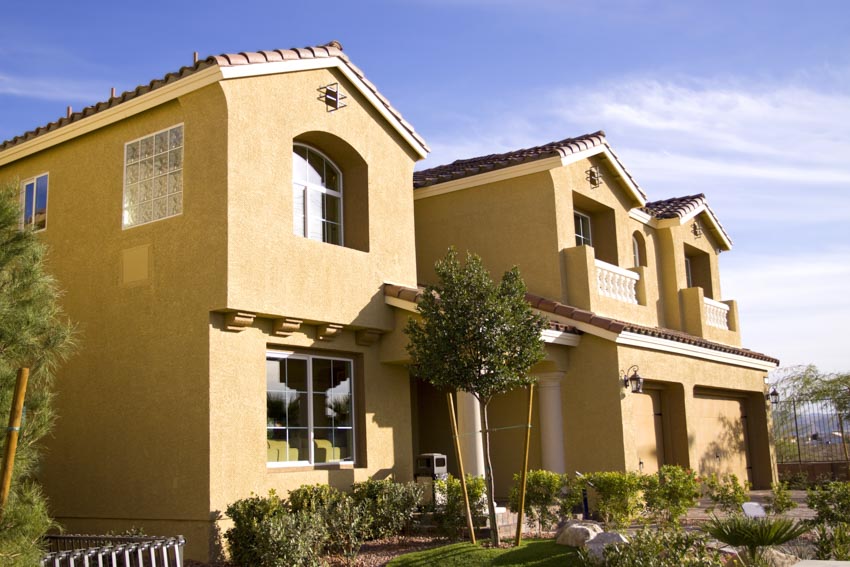
Stucco homes offer remarkable versatility and practical benefits, including fire resistance and superior color retention. When selecting exterior paint colors for stucco, Light Reflective Value (LRV) should be a key consideration. High LRV paints reflect more UV radiation, enhancing fade resistance and helping maintain your home’s appearance for years to come. The best exterior options includes neutral colors, earth tones, and subtle colors. Here are five outstanding high LRV color choices that can dramatically transform your stucco exterior.
Traditional neutral colors are pretty popular and the safest colors to choose when painting your stucco exterior. Neutral colors include grays, beiges, white, black, and tans.
Crisp Whites (LRV 85-95)
White can give exterior walls a cool, modern, clean, crisp white that gives the Mediterranean and coastal beach design. A burst of color, when added to white stucco walls, offers a twist of nature and a little playfulness to the style. It may be that a white may mean a little extra effort in keeping the exterior wall clean. Crisp whites, with light reflectance values (LRV) between 85-95, provide numerous benefits that make the extra maintenance worthwhile for many homeowners.
The high light reflection of white stucco maximizes resistance to heat and UV rays, helping to cool your home. It also gives off a clean, modern appearance that looks fresh and bright year-round. White serves as a perfect backdrop for accent colors on doors, window trim, foliage and furnishings. For these reasons, white stucco exteriors have an enduring, timeless beauty perfectly suited to coastal and Mediterranean architectural styles.
While pristine white requires occasional touch ups to stay looking its best, many homeowners find the aesthetic rewards worth the extra care. A fresh white exterior can enhance curb appeal and give your home a light, airy look and feel. For those desiring a classic, versatile stucco color, white remains a beloved and stylish choice.
Design Tip: While white requires occasional maintenance to stay pristine, its classic appeal and cooling properties often outweigh the extra care needed.
Warm Tans (LRV 60-75)
Classic tan or light tan offers a European vibe, a breezy and tropical feel. A tan color blends well with a hot, dry, and desert area. You can transport your home to the sun-drenched cliffs of Santorini with warm tan hues that radiate cozy elegance. Natural beiges and light desert tones between LRV 60-75 create a European villa aesthetic perfect for Mediterranean-style homes.
The earthy yet vibrant palette concealed dirt well, effortlessly pairing with terracotta roof tiles and sandy landscaping. Compared to stark whites, these softer tones are lower maintenance, hiding everyday wear while still feeling bright and airy.
Design Tip: Hot and sunny areas benefit the most from high LRV values above 65+.
Sophisticated Grays (LRV 50-70)
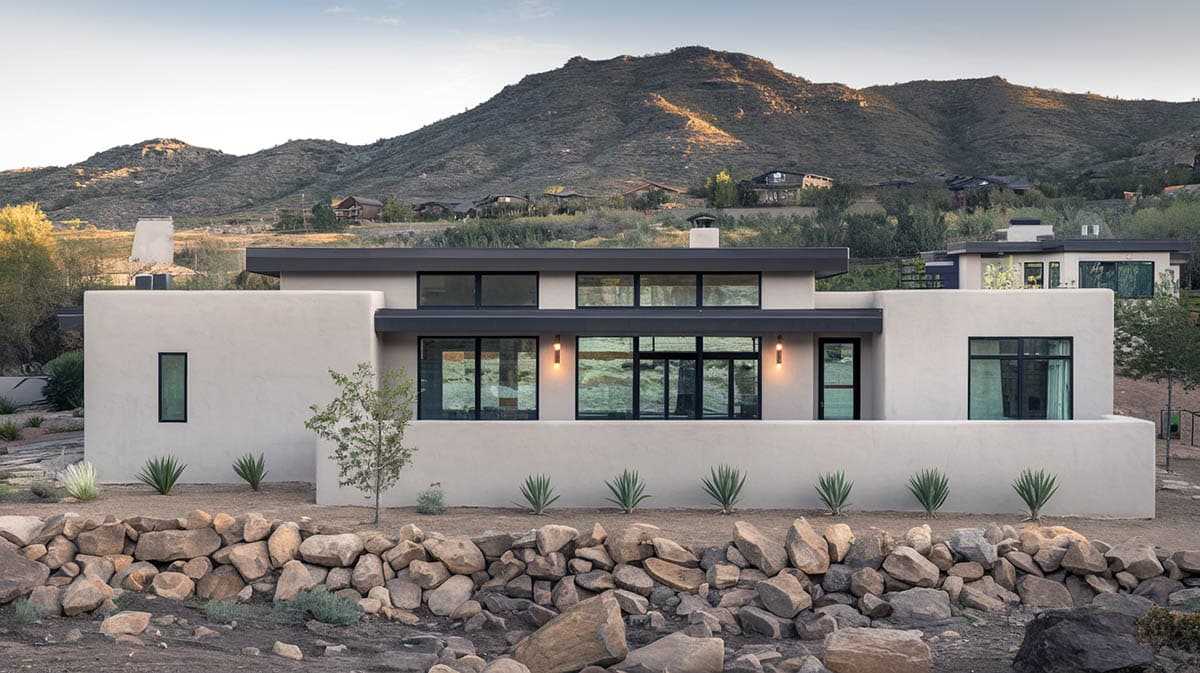
Painting in gray translates to a contemporary vibe that feels updated and fresh. Gray pairs well with other materials like brick or stone, a deeper shade of gray for roofing tiles, giving your finish depth and dimming down the brightness. Consider sophisticated grays with light reflectance values (LRVs) ranging from 50-70. These on-trend grayish tones can create the perfect backdrop to make other features really pop.
Unlike stark, cold grays, today’s sophisticated grays have some warmth that complements brick or stone accents beautifully. Paired with a darker charcoal roof, grays provide depth and visual interest to your home’s façade. Neutral but not boring, they allow colorful plants or eye-catching architecture details to shine.
Sophisticated grays effortlessly bridge the gap between contemporary and classic. They offer plenty of curb appeal without appearing too trendy or stark. Plus, their subtle complexity means they pair equally well with a variety of materials from different eras. Their versatility makes them ideal for blending old and new styles seamlessly.
Subtle Blues (LRV 55-70)
Using charming light blue color to your exterior can be both playful and cozy, especially when paired with darker blue shutters. These light blue hues in the 55-70 LRV range add personality to a home’s exterior while still maintaining plenty of natural light reflection.
When paired with crisp, bright white trim and natural stone accents, the entire facade takes on a breezy, seaside feel. It’s a look that whispers ocean air, no matter the season. Subtle blues offer year-round curb appeal that is both timeless and inviting. Friends and neighbors will feel instantly welcomed thanks to the lightweight, airy quality of this versatile shade. It brings warmth without overpowering – a perfect balance for homeowners seeking a serene aesthetic.
Muted Sage Greens (LRV 45-65)
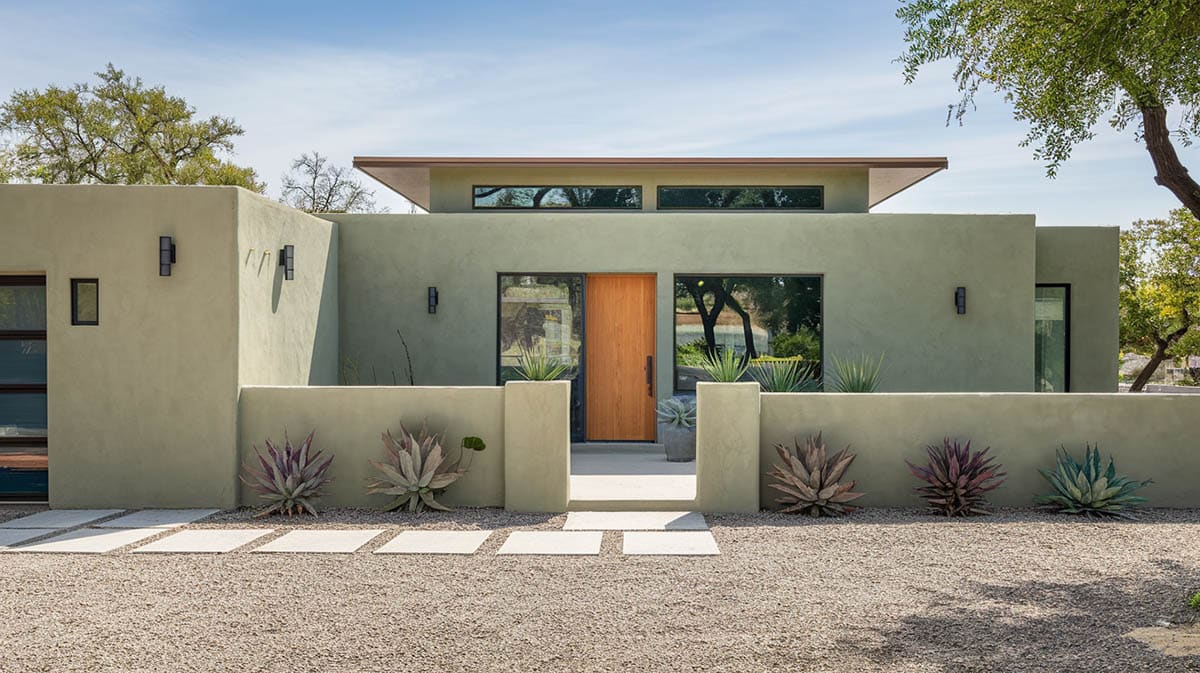
Rustic green is a popular color that offers an earthy tone that gives a unique twist and instantly changes a home’s style. It can turn a modern home into a vintage-inspired elegance. Consider embracing the earthy elegance of muted sage greens with a light reflective value (LRV) ranging from 45 to 65.
Picture a sage green front door that harmonizes beautifully with your home’s landscaping. Or Sage green walls in a bedroom enveloping you in peaceful relaxation. Unlike stark whites or harsh grays, muted sage greens infuse spaces with cozy vibes. Their versatility also allows them to feel perfectly at home in both traditional and contemporary interiors.
Warm Pastels (LRV 65-75)
Are you looking to give your stucco exterior a fresh, elegant facelift? Soft pastel hues with high light reflective values (LRVs) allow you to transform the look while still allowing ample light reflection. This keeps your home bright and cheery.
Wheat & Buttercream Yellows
Consider embracing the understated elegance of pale pastels ranging from wheat yellows to buttercream creams. These subtle shades in the LRV (Light Reflectance Value) 65-75 range add a gentle golden glow without overpowering a space.
Specifically, for a clean and airy look, try Pale Wheat with an LRV of 73. This barely-there yellow reads almost as a warm neutral. Or go slightly bolder with the Buttercream tone and its LRV of 71. It has a bit more saturation – though still softer than a bright lemon. Another option: Chamois at 68 LRV infuses a sophisticated balance of yellow and beige for a versatile shade. And you can’t go wrong with the aptly named Vanilla Cream at 74 LRV – it strikes the perfect compromise between white and golden yellow.
Best for: Mediterranean, Spanish Colonial, and Traditional style homes
Blush & Rose Tones
From barely-there neutrals to warm, luminous tones, pink paint colors lend sophistication and versatility to any room. For Spanish Revival, Mediterranean, or Contemporary homes, rose quartz offers an elegant palette ranging from soft shell pinks with a 70 LRV (light reflectance value) to rich champagne colors awash with 72 LRV golden undertones.
A pale rose with gray cast subtlety sets off this palette at 68 LRV. The most saturated shade, Desert Rose at 65 LRV, evokes images of sunset colors with its warm, sandy pink hue. As the most adaptable neutral, these blush and rose tones shift alluringly from soft and demure to bright and saturated with changes in lighting and surroundings. Utilize lighter pinks to open up a space and promote airiness or deeper rose shades to create cozy, elegant spaces.
Best for: Spanish Revival, Mediterranean, and Contemporary style homes
Cool Pastels (LRV 65-80)
If you want a splash of color, consider embracing the tranquil beauty of cool pastels. These soft hues in the light reflectance value (LRV) range of 65-80 are perfect for creating a peaceful yet sophisticated look.
Subtle Blues
Start off with the delicately dreamy Morning Mist, an ethereal pale blue with just a whisper of green that calls to mind lazy mornings wrapped in cozy blankets. Next, try the relaxed and beachy vibes of Coastal Fog, a gray-tinged robin’s egg blue reminiscent of misty seaside mornings. For a serene and airy feel, go with the barely there tone of Sea Salt – it’s such a delicate blue that it reads almost white. Or take things in a crisper direction with the clean and bright Arctic Blue.
These restful pastel blues and blue-grays effortlessly complement coastal, contemporary and colonial style homes. So go ahead – embrace the calming power of cool colors! Painting your walls in these tranquil shades is sure to inspire relaxation and renewed creativity.
Best for: Coastal, Contemporary, and Colonial style homes
Gentle Greens
Go for the tranquil essence of nature with Gentle Greens. This sophisticated family of light greens evokes a sense of renewal and growth, perfect for ushering in the spring season.
We’re swooning over the airy Seafoam Mist – a barely-there green with hints of blue that reads almost as a neutral. Yet it adds a subtle pop of color. The lightweight Pale Sage oozes with organic vibes. It’s an understated, natural green that seamlessly connects your home to the outdoors. Fans of gray-greens will adore the upscale Celadon, with its cooled-down undertones of gray adding an extra pinch of sophistication. And for those favoring a green so light it nearly passes as white – meet the luminous Spring Frost. Bathed in a neon-like glow, it packs plenty of pigment.
Best for: Craftsman, Colonial, and Contemporary style homes
Tips For Working With Pastels
When working with soft, dreamy pastel stucco exteriors, you’ll want to carefully coordinate your trim and accent colors to allow the subtle hues to shine. Choose pure white trims (with a light reflectance value or LRV of 85 or above) for a clean, crisp pop of contrast. Or opt for soft whites in the 82-84 LRV range for a more subtle, sophisticated look.
For a cohesive feel, go 2-3 shades darker than your main pastel color. Rich taupes, greiges and warm grays make excellent complementary neutral pairings with blush pinks, minty greens or washed-out blues.
Accent Colors
When choosing accent colors for a light stucco exterior, you’ve got options! Complementary shades that really make your house pop include deeper tones of your main wall color. For example, pair a light gray stucco with charcoal window trim. Contrasting neutral accents also add nice definition, like an off-white exterior with dark brown shutters.
Don’t be afraid to incorporate natural materials as well. The rich warmth of wood trim frames windows beautifully against a pale backdrop. Consider brick or stone decorative touches to ground the aesthetic. Touches of nature’s textures add welcoming visual interest.
Overall, accent colors for light stucco should either support through tonal alignment or contrast strikingly. Just don’t forget – the main wall color should still have a high LRV to avoid looking dull or flat. Embrace these lively, complementary accents! They make the difference between a blank slate and a welcoming home.


